

FREE Lift-Out Kids Activity Mini Mag Baby UnderstandingLanguageSign Our Brains and Behaviours Water Safety and Managing Emergencies SpookyImperfectionEmbracingHalloweenTreatRecipes PARENTSAGEINGThingstoPlanforOur DIFFICULT“Whole7EVENTSFamily-Friendly100+WhatisSleepPhaseDelay?TipsforActivatingBrain”Learning4SurvivalSkillsLearntfromGamesHowtoHandlewithYourChildTOPICS MagazineandParentsKids 143OCTISSUE:2022 TOWNSVILLE 4

Hello and welcome to our Spooky Halloween edition!
This time of year is always exciting, not only is it Halloween, it’s also the final quarter of the year and the countdown to Christmas is on.
This time of year is HECTIC; not only are we busy finalising projects from the year and gearing up for the holiday season, it’s also the time when our kids have lots of end of year celebrations, assignments and performances - and maybe even the end of an era. It’s the time of year when everyone wants a piece of us, but we may only have a few crumbs to offer. It can also be an emotional time as your little one may be heading to daycare, kindy, school, highschool or uni!
So, right now it’s especially important that you take really good care of yourself. After all, you wouldn’t want to be dragged over the finish line and end up wanting to hibernate over the Festive Season. For more thoughts on this, read The Thing Is on page 5.
We have lots of great content in this edition, including some fun ideas for TheHalloween.teamandI hope you love this edition as much as we do and that you get lots out of it. If you want to share your voice, you can find out more about becoming a contributor at www.pakmag.com.au/communitycontributor
Until next time, happy parenting, and remember to tell everyone you read it in PakMag.
Breep 4053 3331 e admin@m2f.com.au a PO Box 7433 Cairns Qld 4870 www.paktownsville.com.au • www.pakmag.com.au • www.m2f.com.au







Our Global Parenting Channels PakMag


Our North Queensland Channels PakMag Townsville Parents of North Queensland pakmag_nqParentsand Kids of North Queensland


PakMag would like to acknowledge the First Nations people of North Queensland; the first storytellers and Traditional Custodians of all the lands on which we work, live and enjoy. We pay our respects to their Elders, past, present and emerging.
Disclaimer: No part of this magazine, including the advertisements within it may be reproduced, in part or in whole without the expressed permission of the editor. Whilst the greatest of care is taken to ensure that the information in the magazine is correct at the time of going to press, readers are advised to check details before visiting. The publishers cannot accept responsibility for errors, inaccuracies or omissions. The ideas expressed within PakMag are not necessarily the views of the publishers, but those of individual writers. We have done our best to ensure all events and information was correct at the time of going to print. Please check with individual businesses and authorities.
Net distribution per issue: 10,000.
Please keep this issue for future reference, pass onto your friends and family, use for craft projects or place into the recycling bin.
www.pakmag.com.au families f i


| October 2022 3
Thepakmag_nationalOnlinePakMagGiveItAGoGroupForParentsPakMagTVThePakMagParentsPodcast
Welcome PakMag Founder and Editor-in-Chief Bree James Creative Team Leader, Designer and Editor Clare Winter AssistantMultimedia Alyssa Marino Sales and DevelopmentBusiness Tracy Couper Writer ContentandCoordinator Lis Rooks Accounts and IT Support Trent Stievano 5 The Thing Is 7 Embracing Imperfection by Silencing Your Inner Critic 8 4 Survival Skills Learned from Video Games 11 How to Have ConversationsDifficultwithYour Child 14 Switched On Learning: Activating Left and Right Hemispheres for Whole Brain Learning 17 The Truth Play-BasedAboutLearning 18 How Understanding Our Brains Helps Us Understand Our Behaviour 21 Baby Sign Language 22 Bump, Bub and Beyond 24 Parent’s Puzzle 25 Mini Mag 31 Water Safety and How to Manage an Emergency 32 All Things Health 35 4 Things to Plan Now for Your Ageing Parents 39 What is Sleep Phase Delay? 40 All Things Tweens and Teens 43 Daddy Diary 44 Community Noticeboard 46 What’s On

The Thing Is with Bree James

If you are feeling anything like me right now, you feel like a tasty chocolate cake that everyone wants a piece of but all you have left to give is crumbs.
The thing is, many of us are feeling pulled into so many different directions that not even Siri can help us navigate where we are going. Let’s face it, this time of year is HECTIC; not only are we busy finalising projects from the year and gearing up for the festive season, it’s also the time when our kids start to have lots of end of year celebrations, assignments and performances. We can feel quite fragile as the mental load of life has us overthinking day and night, and we never feel fully rested
Recently,anymore.RUOK Day made me ponder about how many people are actually ok in my world.
You yourself may be ok but many of us have people in our life who are not, which makes us not ok! I watch a loved one’s daily struggle with type 1 diabetes and other medical issues, and sometimes it’s really tough to be the support person for someone who is unwell, whether that be physically, emotionally or mentally.
This also made me realise that right now is the time to be taking really good care of ourselves so that we aren’t dragging ourselves over the finish line battered, bruised, and worn out wanting to hibernate over the festive season. Ideally, we want to glide into the new year with a bit of energy left.
Lets face it, it’s been a really challenging year for everyone. Between the non-stop illnesses in many households and the overwork due to staff shortages, many of us are feeling beyond exhausted.

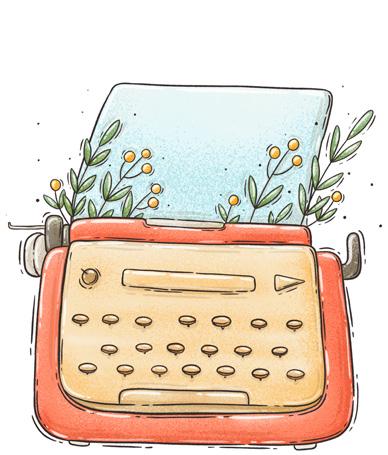
Nevertheless, your health is the most important indicator of how great your life is and will be. So, the best thing I can do for you is be a healthy me, and the best thing you can do for me is be a healthy you. So many of us are neglecting integral parts of our health but with everything happening in the world, it is more important than ever to be intentional with our health. It’s vital to remember that our internal world is more important than our external world. Whatever is happening externally won’t impact you as much if you have strong internal foundations.
I truly wish everyone great health, it is so important. To those of us lucky enough not to need medicine daily, count your blessings. To all the diabetics and immunocompromised people in my world, you are warriors. To all the scientists, health, natural health and medical workers past, present and emerging, I admire and appreciate you. Especially those who have looked after my family and friends in the past.
Remember the best investment you can make is in yourself, so make time for a massage, a bath, a walk, a nap. Listen to your body and do what you need to nurture yourself. Only then will you have lots of slices of cake for everyone, including yourself.
www.pakmag.com.au | October 2022 5 The Thing Is
Bree www.myvisionbook.com.auwww.breejames.com

Feature
Embracing Imperfection by Silencing Your Inner Critic
STORY Bree James
Imagine a life where you love yourself, warts and all, and you allow others to do the same. People who truly care about you, don’t expect you to be perfect; they want you to be authentic. Just like we can’t have night without day and rainbows without rain, we all have a bright and dark side to us with positive and negative attributes.
The funny thing is, we often connect with others over our insecurities, quirks, and struggles.
I interviewed Dain Heer, author, change-maker, speaker and co-creator of Access Consciousness on the PakMag Podcast to find out more about how we can embrace imperfection.
Why is perfection killing us, and how can we embrace imperfection?
Those that strive for perfection; everyone hates… well, dislikes vehemently. That’s because we know these people are doing it to prove themselves and are full of doubt. They're not doing it for the joy of it, they're not doing it to contribute to other people, and this striving for perfection is unhealthy and unproductive.

Perfection is basically the highest form of judgement, and we inherently know that judgement never feels good. Someone once said to me “Breathe, you know no one likes anyone that's perfect”, and I was like, “Ah, that's really true”. So why does everyone strive for perfection when you know no one wants to see anyone perfect anyway?
Why be your own cheerleader?
Being your own cheerleader means keeping your spirits up and cheering for yourself even when others belittle what you're trying to achieve. By being your own cheerleader, you give yourself permission to unashamedly care about what you're trying to
accomplish, and you don’t let anything or anyone stop you.
How can we silence our inner critic?
98 percent of your thoughts, feelings and emotions you pick up from others. It’s great practice to ask “Who does this belong to?”, and “Is this mine?’’ to any thoughts, feelings and emotions that come about. If they're not yours, that's an acknowledgement that you're picking them up from other people.
In the past I have woken up with a sense of overwhelming depression - a sense of not knowing if I could even spend another day on the planet. I asked myself “Who does this belong to?”, and all of a sudden it disappeared. It was gone. All you have to do is return it to the sender. Don’t be burdened by all of these things that you're aware of from other people's worlds.
How can we curb our self-judgement and increase our happiness and self-love?
I love this saying. “What if everything I thought was a wrongness of me is actually a strongness of me?”
Dr Dain Heer is an author, change-maker, speaker and co-creator of Access Consciousness, one of the world’s largest personal development companies. Heer is also the founder of International Being You Day. For more than twenty years, he has travelled the world, sharing his unique insights on happiness, relationships, getting over the yuck, and everything in between! In his talks and workshops, he uses a set of tools and provides step by step energetic processes to get people out of the conclusions and judgments that are keeping them stuck in a cycle of no choice and no change. www.drainheer.com / www.accessconsciousness.com/youarenotalone
For more on this topic with Dain, tune into Episode 113 of the PakMag Parents Podcast at www.pakmag.com.au/podcast

www.pakmag.com.au | October 2022 7
Feature
from Video and Online Games

 STORY Lis Rooks
STORY Lis Rooks
Whether you've moved conversations from WhatsApp to Discord or Fortnite, have replaced family game night with Among Us or Valheim, or like coming together with strangers around Monster Hunter World battles, the last few years have proven how gaming can bring us all together. Interestingly, apart from connecting with fellow gamers, these games also teach skills we generally don’t think about in our modern lifestyles.
Amongst the multitude of survival games, core survival mechanics are the basics of virtual survival skills from chopping trees, building your base, getting food and defending yourself against nasties. Advances in gaming have produced survival simulations that force players to learn a vast range of strategies and skills you would also need to survive in real life.
Here are a four things video games can teach us:

1. Gathering Supplies
This may seem obvious to you, but would these important skills be obvious to every child? Maybe those who did Scouts, but certainly not your average child. At the start of a survival game, the character usually spawns in a random environment with nothing but their bare hands (or maybe equipped with a basic tool). To give your character any hope of survival, you must scour your immediate surroundings for useful items while avoiding potential threats. You go around your environment looking for items like food, water, clothing, basic tools, etc., familiarising yourself with your surroundings and remembering spots where you can re-acquire or store materials. This is known as a basic strategy for gamers and is actually the basic process for real-life survival.
2. Crafting Teaches Creative Problem-Solving and Recycling Skills
You may also learn to gather and hide supplies for future trading and bartering. Most gamers are familiar
with the ‘crafting’ element, which refers to gathering supplies that can be built into something useful later on. Crafting empowers you to make weapons, clothing, armour, traps, etc, and modify or upgrade items you already have.
In reality, crafting for survival is essential, and a mindset of ‘go basic first, then upgrade’ is also valuable. Developing the ability to craft items also means improving your skills in repairing possessions. Instead of throwing broken items away, you can either fix them or use parts of those items to create something new!
3. Security is Priority
In survival situations, danger lurks everywhere. Usually, one of the first main tasks in survival games is to build a shelter to keep your character safe. In real life, a shelter ensures that humans are protected from predators and the elements. Both in games and in real life, the fact that we are exposed to threats teaches us the importance of being secure.

8 October 2022 | www.pakmag.com.au
STEAM
4. Self-Reliance

Survival games also teach the importance of self-reliance. In most survival games, you start the game alone and complete various tasks yourself. Though it may be fun to have teammates, you have to learn who you can and cannot trust through cautious trial and error - much like in real life. Surviving by yourself not only teaches you greater confidence; it also helps you become more self-aware of your strengths and limitations.
Although survival games are wilderness survival simulations, it is not an ideal thought to get lost in the wild to test your survival skills based on gaming knowledge alone. However, if we dissect the game qualities, strategies and mindsets, we can recognise true-to-life aspects. Knowing these aspects of strategy setting, crafting, self-reliance, prioritising essentials and gathering resources are all baseline mindsets for modern life.
Sure, we might not know how to skin an animal or cook meat in the wild, but we do know how to start thinking and prioritising during an unforeseen situation.
1. Don't panic
2. Make a basic shelter
3. Find water
4. Construct distress signals
5. Make traps or fish if possible, and gather edible plant food

6. Explore - map out your area step by step and mark the way back to your camp
7. You can survive at least 3 days without water, and 3 weeks without food.
Some may be lucky and learn this from scouts camp or a family member… but many of us now and in the future are likely learning these basics from video games.

How to Have Difficult Conversations with Your Child
 STORY Christina Jacobson
STORY Christina Jacobson
Talking about hot topics such as death, disasters, drugs or sex make most parents start to twitch. Parents tend to shy away from them because they don’t want their child ruminating on negative thoughts. But we all know, life can be hard and there will be times in your child’s life where they either experience some of these things first hand or hear about them via friends or social media.
So how do you prepare your child for topics like these?
1. Prepare Early
Don’t wait until you have to face one of these conversations to start thinking about how you would go about it. Laying the groundwork for difficult conversations starts when children are very young. It is never too early to start listening to your child. Set aside a part of your day, every day, to just spend time with them in an unhurried, comfortable way. Listen to what they are saying, ask questions to get
the entire picture. It doesn’t matter if your child is talking about Paw Patrol, school, or what they want to be when they grow up. It might seem insignificant to you, but as a parent you are laying the foundation for being a reliable sounding board.
If the groundwork is laid carefully, difficult conversations with your child should be easier to navigate. If you regularly tune in to your child, then you will hear the questions that pop up. “Where do babies come from?” “My friend was calling a girl in my class this name. What does it mean?” “What is happening in Ukraine? I saw something on the news that made me scared.”

Listen for the question and as you answer, stay child appropriate. Sometimes adults like to talk about way too much information. Children don’t work that way.
If they ask where babies come from and they are in Year 1, a simple “From Mum’s tummy” will usually suffice. They are not asking for a biology lesson.
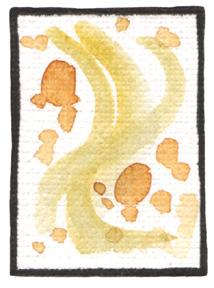
www.pakmag.com.au | October 2022 Education11
2. Be Approachable

Your child will pick up the vibe that you are an interested party who wants to hear about all aspects of their life. This shouldn’t be forced. Honest sharing takes time. Your child will go through stages of talking about everything to talking about very little. That is normal, just make sure to have some part of your day that is open to them. Let them know that you love them no matter what. This is called unconditional love and I can hear you right now saying, “My child knows I love them”. Yes, but it is amazing how little minds can twist when they are being disciplined and emotions spill over. Words are powerful and not easily forgotten.
3. Watch Your Words
Be careful of the language you use when you are angry or frustrated. Remind children that you didn’t like their behaviour, and their consequence is a result of their poor behaviour, but you still love them - no matter what.
Children need to hear this regularly because as they grow, they become more aware of familial expectations. They feel pressure to conform, but will push buttons and try to bend some rules. That is healthy and completely normal. Treat the behaviour as it comes, but love the child always.
4. Create Family Values
Having family values and discussing them regularly with your child is also an important foundational step towards having difficult conversations. Talk about good things and bad things, right and wrong, fair and unfair. What is respect? How do I show it? Identify what makes them so and give examples that your child can relate to. A strong moral compass will ensure that your child understands these concepts before those difficult conversations arise.
A note of caution here - make sure what you say matches what you do. Model the values. Let children see that you believe them and those morals regulate your interactions with others. Watch your conversations at home. Children are very perceptive. They pick up the slightest variations between your actions and speech. Children are wired to learn through observation. Of course, parents aren’t perfect so when you do slip up, let that be an honest conversation to have. “I shouldn’t have said that. It wasn’t fair of me. I should have been a better friend.” Let your child see or hear an apology.
5. Show Empathy
Don’t be afraid to show emotion. Don’t downplay your feelings. It is okay to be sad and to cry (even if you’re a
man). It is okay to be angry and want to yell. It is okay to be frustrated and upset. Talk through these emotions with your child. Emotions are real. Let them out.
6. Stick to the Facts
Always state facts. Facts are easier to build on. A typical child will think about your response and come back later with more questions when they are ready. “But if they are in Mum’s tummy, how do they get out?” Then answer that question, and always use the proper terms for all body parts.
7. Instigate Conversations
Sometimes difficult conversations need to be approached, rather than waited for. In that instance, it is usually easier to delve deep when you are doing something together, not staring each other down. That is uncomfortable and lends a formality and awkwardness to the situation that you want to avoid. Going for a walk, baking, playing a puzzle or a game are great situations for honest conversations. Driving in a car is one of the best places to have deep conversations. It is quiet, no one is going anywhere and the participants are side by side not face to face.
8. Be Honest
When having difficult conversations, honesty works best. Some parents feel that they have to have all the answers. This is not the case - it is okay to say, “I don’t know”. Feel free to quantify the situation with your own thoughts, but it is also important to ask your child what they think. Sometimes wisdom can be found by seeing things through a child’s eyes.
Here are 7 Difficult Conversations to Tackle
website is a great resource in general when talking with your child about various situations. There are many resources here to take advantage of. www.strong4life.com/en
Christina Jacobsen serves in a dual capacity as the Director of Primary and a Year 1 teacher at Peace Lutheran College. She has taught interstate and internationally in independent schools in the US, the International Education Agency in PNG and now for Lutheran Schools in Australia. She has held various teaching positions in addition to a Curriculum Leader. Her training in Christian Studies, cross-cultural education and curriculum development has helped define and support the education of the whole child at Peace Lutheran College.
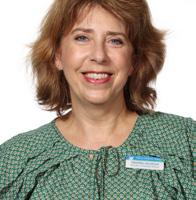
12 October 2022 | www.pakmag.com.au Education
1. Death 2. Drugs 3. Sex 4. Vaping 5. Consent 6. Racism 7. TheReligionStrong4Life

Switched on Learning: Activating Left and Right Hemispheres for Whole Brain Learning
STORY Professor Ken Purnell
Want to help your child to love learning, but not sure where to start?
As parents and teachers, you can help switch on the whole brain through activities that focus on attention. This helps grow goals and boost both learning and mental Decadeshealth.ofneuroscience
research has shown that every human brain benefits from a range of learning strategies that nurture, challenge and ultimately grow our grey matter.
The brain has two hemispheres – and broadly the right hemisphere handles creativity, imagination and strong emotions, while the left hemisphere leads cognitive functions such as speech, language and logic.
But people aren’t “right-brained” or “left-brained” - in fact, we all learn best if the teaching presents information in ways that trigger both sides of the brain. Effective learning requires information to appeal to every part of the brain.
Here are my best tips for right and left brain activation:
1. Just Breathe - Right Side
Being told to ‘take a deep breath’ when you’re stressed out? The excellent suggestion has a neuroscientific basis!
A deep diaphragmatic breath (known by many little kids as “belly breaths”) fills your abdomen, rather than your chest and triggers a relaxation response from your brain.
It also calms unhelpful emotional responses that might be pinging around the right hemisphere, and puts us in the Plentypresent.ofschools have mindfulness programs for students, and establishing at-home mindfulness routines can put kids in the best headspace to learnthere’s plenty of suggestions at www.mindful.org
2. Visualise Goals - Left Side
Ever noticed skiers in the Olympics planning their downhill run at the top and their head and body moving a bit like they are actually doing the real run?
Imagining and visualising doing a task lights up the same neural pathways that you use in doing it, and helps prepare for success with detailed planning. Visualising the process (and the reward at the end, whether that’s gold on the podium or the ice cream after basketball training) kicks in feel-good neurochemicals such as dopamine and endorphins.
Even better, studies have shown watching others complete a task - like play football, dance, or build a robot - also triggers the same brain regions as doing the task yourself. So the brain is still learning and growing, even as a spectator. Let your kids know they’re growing their abilities by watching, then challenge them to get out and try it themselves.
14 October 2022 | www.pakmag.com.au
Education
3. Throw Some Colours - Right Side
Creative play develops the brain’s executive functions, which allows growing children to understand and manage their emotions.
Getting creative can boost learning too, as getting expressive through colour, shapes and design switches on brain processes. This includes working memory, processing, information manipulation and abstraction, which is characterised by adaptability and flexibility.
Whether it’s drawing, painting, photography, constructing, or other artistic pursuits, challenging your child to incorporate some art into how they learn will help them find new ways to explore the information.
4. Problem Solve in Stages - Left Side
Plenty of games build your child’s brain as they notice and exploit patterns, improve abilities, and develop problem-solving skills. Chess, Pictionary, crosswords, charades - anything where there are rules, challenges and patterns gets the brain pinging.
But a lot of structured “problem-solving” in the classroom means resolution by the end of the lesson or the day - and most real-world problems take much longer to unravel.
An ongoing challenge, whether that’s designing and building a go-kart or a treehouse, creating their own crossword, or mapping and cataloguing the family’s favourite films, ensures the brain is challenged to store and retrieve relevant information, and even grapple with unsolved questions in the subconscious. Ongoing challenges also mean your child discovers the joy of a “eureka moment” - when the lightbulb turns on and they see the solution they’d been seeking.
5. Create with Movement - Right Side
Physical activity stimulates the entire brain with more oxygen, growing new neurons in the hippocampus (the learning and memory centre) and boosting frontal lobe (problem-solving centre) plasticity.
Our kids can’t effectively learn if their bodies and brains aren’t being stimulated with physical activity, at least 30 minutes a day and ideally more than an hour.
So if there’s something they’re trying to learn, add music and a dance as they practise. Maybe even get inspiration from Tiktok, or film it to share with family and friends if they’re keen to show off their skills.
The good news is, the more physical activity throughout the day will also promote better sleep at night. Good sleep is important to several brain functions, including how nerve cells (neurons)
communicate with each other, and removing toxins in your brain that build up while you are awake.
6. Put Pen to Paper - Left Side
This generation of learners are what we call “digital natives” - they have been born into a world of screens. But going back to pen and paper can provide a brain-boost for our switched-on kids.
My colleague and education academic Dr Ragnar Purje has found handwriting, and especially writing with chalk for younger children, has a “profoundly important” role in developing fine and gross motor skills, and the intellectual ability to construct a story.
The challenge of handwriting, especially if it is frustrating at first, brings numerous benefits for young students that tapping and swiping a screen cannot Foldreplicate.andstaple
some blank pages into a book, and give your child the freedom to pen a story - the discipline, dedication, determination and resilience required will build neurological, neuromuscular, gross and fine motor skill pathways.
If writing on paper is a struggle, that’s okay - a tweet, SMS, blog or social media post about what they’re learning can also broaden brain activity. The key is to practise writing things concisely, logically and in an analytical way.
7. Focus to Absorb - Both Sides

I was in my new car recently with BMW’s chief driving experience instructor for Australia. Steve is a former racing driver, and his dad was an international Steve’schampion.key
piece of advice whether on the road or race track: Be focused, and take in as much relevant data as possible to complete your drive successfully.
Ditto for learning. Without focus, memory formation and consolidation, recall is compromised. Optimal learning requires the brain-friendly learning experiences already outlined, but all done with focus.
So challenge your children or students to engage in various projects and activities that require them to constantly have stretch goals, or new achievements to master. That constant growth will improve their ability to focus and maximise the brain data they are collecting for learning. Just as important, they grow pride and confidence in their rapidly-expanding abilities.
Finally, don’t think these processes are just for kids. Neuroplasticity tells us it’s never too late to retrain our brain - so challenge yourself alongside your little people.
Professor Ken Purnell leads Neuroscience Education at CQUniversity, where he has worked for more than 25 years. He regularly contributes to the curriculum and assessment authority for Queensland K-12, and he is passionate about skilling teachers for brain-based education. CQUniversity is Australia’s most inclusive university, with more than 20 regional and urban locations offering hundreds of university and TAFE courses, online or on campus.
www.pakmag.com.au

| October 2022 15www.pakmag.com.au | October 2022 Education15

The Truth About Play-Based Learning

“Tell me and I forget. Teach me and I remember. Involve me and I learn.” Benjamin Franklin
Play-based learning is more than just letting children do whatever they want and run riot.

Consider the importance of practical experience during training. When you learn a new skill through a lecture or read workplace policies and procedures, does it all make sense to you right away? Or do you need hands-on experience to get a feel of how it all works and really understand everything new? For children, play is the practical experience that helps them make sense of new skills. Children need play to test out theories and apply practices to real life situations. It is these practical experiences that help them truly understand the world around them.
The Early Years Learning Framework states that “Play can promote positive dispositions towards learning. Children’s immersion in their play illustrates how it enables them to simply enjoy being.” When done right, play-based learning is more than “just playing”. Children are encouraged to ask questions, contribute to their own learning, and develop a true desire to learn more.
As professional Early Childhood Educators, it is our role to guide children and strengthen their understanding of the




world. To do this, we support each child’s development and interests and encourage them to be a co-facilitator in their journey of self-discovery. Combined, a child’s eagerness to learn and an educator’s knowledge creates the ideal environment for growth.
When a child plays, they are relaxed, interested, and open to new possibilities. So, when an educator plays alongside a child and poses questions or guides them through problem solving, play-based learning becomes the perfect tool to teach children gently. We do not simply stand back and watch the children play. Instead, we are involved and engaged with the child so that we can recognise those teachable moments that the children themselves may not know how to navigate through just yet.
Play is how children learn. Without it how can they possibly experience and understand everything the world has to offer them?
At Mary MacKillop Childcare North Queensland, we highly value play-based learning and our early childhood educators endeavour to build on children’s prior learning and current interests. By doing so, we provoke new ideas and learning opportunities that challenge and extend children’s existing understandings of the world.
Contact MMCNQ today to enrol for 2023.

www.pakmag.com.au | October 2022 Advertorial17
How Understanding Our Brains Helps Us Understand Our Behaviour
 STORY Bree James
STORY Bree James
I interviewed Allison Davies on the PakMag Parents Podcast to find out more about our brains and how they impact our behaviour. She is a highly qualified Sound Therapist who holds a Bachelor of Music, Bachelor of Teaching and a Master of Music Therapy, and uses her training to support brain function and reduce anxiety. Her approach is unique in the sense that she promotes personal awareness so you can become aware of your behaviours and mould yourself through brain care.
Whilst we can sometimes only see the behaviour as being the problem, it is never the problem - can you explain why?
Any behaviour is always a byproduct of what is going on in our brain. So when our brain is regulated, when it feels in control, when we feel safe, the way we behave reflects that. We can do the things that people ask of us and we can do what's expected of us because we're
cruising. When our brain is hyper or hypo stimulated, or when our brain is just like ‘what the hell does that mean?’ we feel unsafe. The brain's only goal in life, its only job is to keep us alive. So whenever there is something new, the brain is like ‘Okay, I’ve got to work this out, I'm going to make sense of this so that I feel safe and in control’. When our brain is dysregulated, doesn’t not feel safe, is confused or overwhelmed, our behaviour reflects that.
18 October 2022 | www.pakmag.com.au
Education
What is brain care?
My definition for brain care is giving our brain more of what helps it run and less of what shuts it down. We know there are things that our brain loves that will help our brain feel safe. And then there are things that just lead our brain to feeling overwhelmed, out of control or confused. One of the big things that leads our brain to this state of overwhelm is sensory input. A lot of people, and especially children, have specific sensory needs. For example, let's go with noise, a lot of people experience overwhelm from too much noise. It's not because we're doing anything wrong, but because we live in a modern Western world that's rushed, fast and loud. It's not like it used to be, made up of natural sounds like trees and birds.
Think of the sensory system as an email inbox; receiving input from every single thing we hear, see, smell, etc. So with visual input for example, I don't just mean ‘I see a computer, wall and couch’, I'm talking about every single molecule of visual input. Every time you move your eyes even a tiny bit it all changes, the angle changes, the dimension changes, the colours change, every single piece of sensory information is coming to the Likebrain.anemail,
the brain has to open it and decide, ‘Is this safe? Do I need to action it? Or can I delete it?’ So our brain is mostly going to delete, delete, delete, because most of the sensory experiences we have are not important. But because the brain's only job is to keep us alive, any sensory input it receives is questioned. If overwhelmed, it can't be convinced that we are safe, and won’t get through the inbox fast enough. Once that happens, you’ll go into survival mode and into a state of fight, flight, freeze or fawn. You’ll be shutting down or running away, or people pleasing just to keep the peace.
Tips For Improving Brain Function

1. Check out The Brain Care Café with Allison Davies. www.allisondavies.com.au/the-brain-care-cafe
2. Brain Training, games, puzzles and riddles
3. Meditation and mindfulness Use it or lose it Rest!
So we're doing certain behaviours because the sensory input in our world is causing our brain to shut down. I believe it is one of the biggest problems we face in terms of why so many of us are in survival mode and the reason our brains are struggling so much. We need to look at understanding how a child's brain develops - what's going on in there, and look at emotions, executive functions, hyperactivity, meltdowns and communication. Look at it from a point of supporting our child's brain, rather than trying to focus on the behaviours that come from children struggling with those things.
How can we take better care of our brains?
I believe awareness is key. Our brains don't come with chargers so the only way we can re-energise and revitalise our brain is to pull back from stuff that clogs it up and makes it tired. Most of us can regulate as adults, and that means when we sense that we're getting overwhelmed or when we're in survival mode, we can find ways to bring us back to our centre and let go of what overwhelms us. But as parents, probably one of the most important skills we can give our children is to allow them to bear witness to our self care and regulation so that they can learn to self regulate.
We can do this by singing to them, reading a story, hugging them etc. It's the connection between us and the safety that it brings that allows the brain to feel safe. When our children see us doing what we think might help our brain function, when they see us have a lifestyle that reflects those kinds of things, we are showing them how to self regulate and apply those strategies themselves as they get older.Goeasy
on yourself, because ultimately you can learn all the science, you can understand the brain, you can understand regulation and work out what your kids need… But in its most simple form it comes down to whether your brain feels safe or not. And if you're giving yourself a hard time and trying to sort out everything, it can add to the overwhelm. So, be gentle on yourself, understand that it's not going to happen perfectly, because that is how you get to experience a sense of safety, and that's how your children will experience a sense of safety too.
Allison Davies creates online resources for parents, educators and support staff, and works with schools to deliver professional development around the topics of childhood brain development and the use of music as a regulatory tool. Allison holds a Bachelor of Music and Bachelor of Teaching, a Master of Music Therapy, and Neurologic Music Therapy training. As an autistic person with attention, sensory processing and executive functioning difficulties, she works within a neurodiversity framework promoting acceptance and regulation over assimilation and intervention. www.allisondavies.com.au
For more on this topic with Allison, tune into Episode 122 of the PakMag Parents Podcast at www.pakmag.com.au/podcast
www.pakmag.com.au

| October 2022 19www.pakmag.com.au | October 2022 Education19
4.
5.
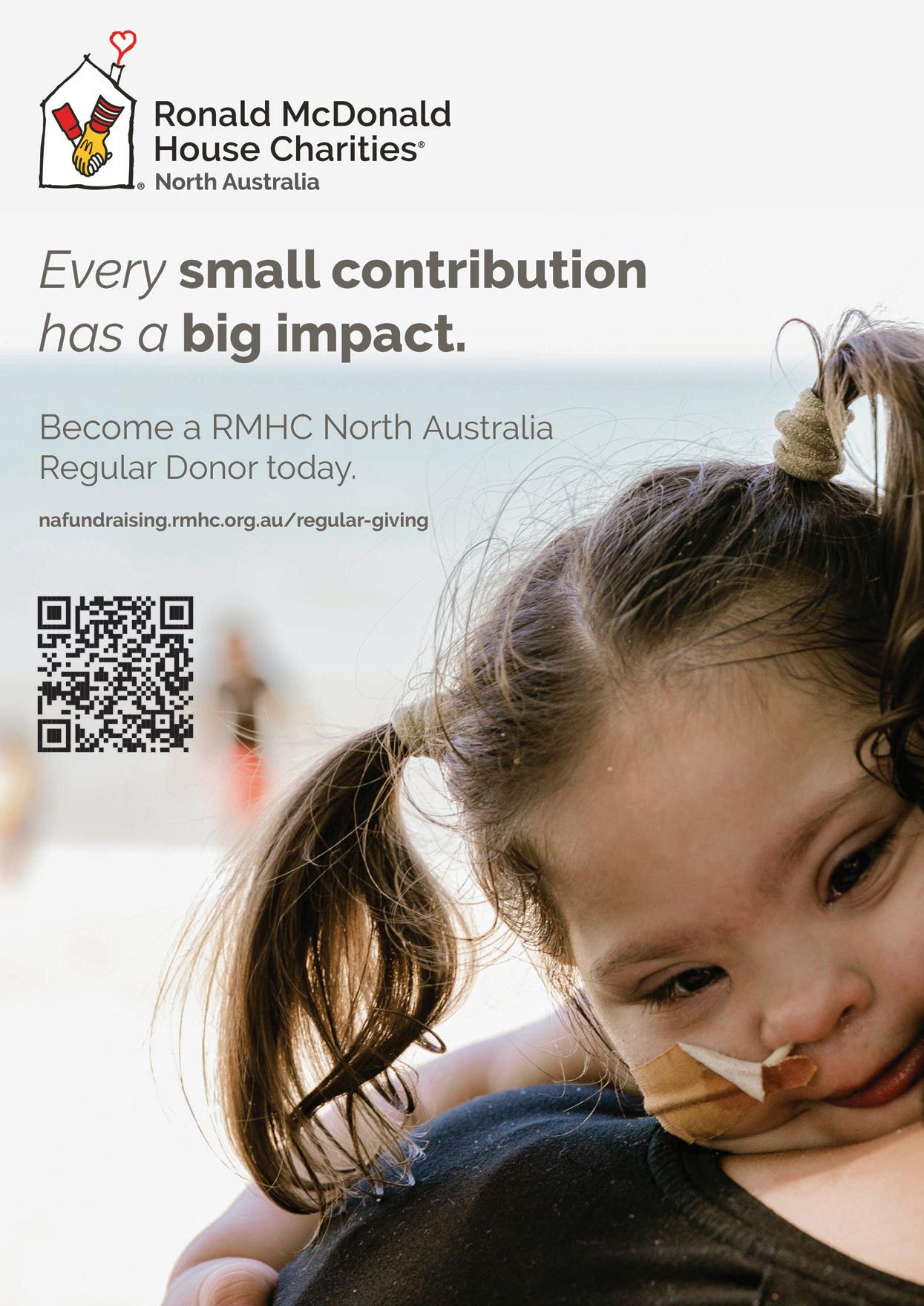
Baby Sign Language
STORY Lis Rooks
Ever wondered what your baby wants, what they are thinking about, or why they are throwing a tantrum?
Just because your baby is not talking yet doesn’t mean you can’t communicate.
We all hate seeing our kids unhappy, and when little ones are too young to speak they often throw tantrums because they can’t communicate their needs or wants. Research shows that the level of frustration children feel diminishes significantly when they can tell you what they want. In recent years, more and more parents are turning to baby sign language to support communication with their preverbal kids. While you can start using signs at any age, the best time is when your baby begins to interact, between the age of six to nine months.
In Australia, the signs are adopted from AUSLAN (which stands for AUStralian Sign LANguage). We use AUSLAN with infants, even if the intention is not to continue signing after the child begins to articulate themselves. AUSLAN is nationally recognised and used within many childcare centres, and of course by sign dependent Australians. By choosing to learn AUSLAN, even at the Baby Sign level, your child learns to communicate with other AUSLAN users. This form of communication not only helps your child, it can
also support the development of friendships with o ther AUSLAN users such as a deaf child at childcare or school.
How to Get Started:
1. Pick 3 - 5 signs. The most common signs to start with are MILK, MORE, and EAT.
2. Use the signs regularly. For example, when you nurse or give your baby a bottle, ask “Do you want some milk?” and sign MILK. Then, every time you talk about milk, use the sign.
3. As your child learns the signs and begins to sign back, start adding new signs.
4. Be patient. It will take time to teach your baby how to sign, but they can recognise the signs long before they can make them. For example, babies will often show their anticipation when you sign MILK by making specific sounds.
5. Learn more about signing with infants by taking classes, attending AUSLAN groups, and practising with friends and family.
No matter what you do, make it fun and enjoy the deep sense of connection you feel when you begin to have two-way conversations.
The following signs can be used every day and are easy to learn and memorise
No - Shake fist (palm facing down) at wrist left and right twice.
Yes - Tilting at wrist, move fist, palm down, up and down.
Milk - As though milking a cow, start with one hand, fingers spread, and draw first hand down and into a fist. Then follow with other hand. Repeat.
Drink - Move hand up to mouth as though holding a cup.
Eat - Move hand, with thumb touching fingers,mouthtowardstwice.
Hot - Start with flat hand, fingers touching chin and thumb extended. Move hand out turning wrist so that hand ends with palm facing forward a small distance in front of shoulder. Can end in direction of the hot thing.

Stop - Hold flat hand in front of you, fingerspalmupwards,out
ColdShake both fists above shoulders, as though shivering.
www.pakmag.com.au | October 2022 21
Bump, Bub and Beyond
1 & 3 2 & 4
Featured products, reviews and prizes. Visit www.pakmag.com.au/win for your chance to win!
Tarramarra Kids Sun Protection Hat

$90.00 - www.uggexpress.com.au
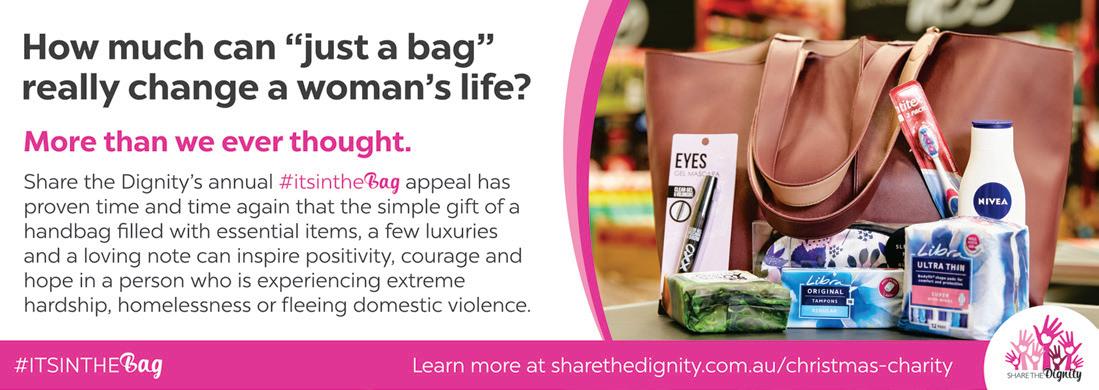
Protect the kids against the scorching sunlight with this adorable Tarramarra Sun Protection Hat. The hat features an adjustable chin drawstring to secure the hat. The mesh lining is breathable and comfortable to keep your little ones dry and cool. Available in five cute patterns including watermelons, zoo animals and sharks.

VTech Soft Discovery Turtle

$39.95 - www.target.com.au
Bump, Bub and BeyondPregnancy,
Your little one will love this big, super soft fabric sea turtle especially created to promote discovery and exploration through tactile play. Turtle’s fabric and stuffing is made using 10 recycled plastic bottles, helping reduce waste. Turtle features soft, textured interactive areas with different marine animals: the flip-up clamshell self-discovery mirror, an octopus with tactile dangling ribbons and a crinkly starfish. Move from sensory exploration to learning cause and effect by pulling the little sea turtle to see it bounce back to mummy turtle’s back. Press the light up turtle button for fun interactive phrases or press the music or fun sounds buttons to trigger upbeat music, songs and soothing nature sounds. Includes three singalong songs and 15 melodies.
Postpartum and C-Section Deluxe Kit

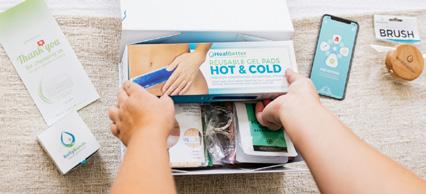
$340.00 - www.bellybands.com.au
Belly Bands believe mums-to-be deserve practical products to manage pain and discomfort during pregnancy and enhance postpartum healing, including caesarean recovery. This led them to bundle all their maternity essentials at a significantly reduced price. Included in the deluxe kit is a 18cm 3-in-1 belly band, 10cm sacroiliac pelvic belt, 10 antibacterial wipes, disposable maternity pants, stretch mark and scar cream, a natural skin brush, gas and bloating herbal tea, hot and cold perineal pack, silicone scar sheets (for stretch marks and C-section scars), compression leg stockings, breastfeeding hot and cold packs and a Peri-bottle for postpartum healing.
22 October 2022 | www.pakmag.com.au Bump, Bub and Beyond
What are Febrile Seizures?
Febrile seizures are convulsions that can occur when a young child has a fever above 38°C. Most commonly experienced by six month to five year old children, seizures may look serious but usually stop after a few minutes and don’t cause other health problems. After an episode, some children might feel sleepy, while others feel no lasting effects.
There are two types of febrile seizures; simple and complex febrile seizures. Simple seizures usually last a few minutes, during which a child may convulse, shake, twitch, roll their eyes, moan, become unconscious, vomit or urinate. Complex febrile seizures last longer than 10 minutes, happen more than once in 24 hours, and involve movement or twitching of only one part or side of their body.
Febrile seizures are not considered epilepsy and kids who have a febrile seizure have only a slightly increased risk for developing epilepsy.

giving them fever-reducing medicine. Continue to monitor your child, and call your doctor for advice and to book an examination. Take your child to a hospital emergency department or your GP after a seizure. In most cases, no other treatment is needed, however, your doctor will advise you on this.

If your child has a febrile seizure, try to stay calm. Gently place them on the ground, remove any nearby objects, and roll them onto their side to prevent choking. Loosen any clothing around the head and neck, watch for signs of breathing problems, including bluish colour in the face, and try to keep track of the seizure’s duration. If the seizure lasts longer than five minutes, your child shows breathing problems or if you are very worried, call 000 right away.
Do not try to hold or restrain your child or put anything in their mouth, and wait until the seizure is over before
Newborn babies don’t produce real tears until approximately three weeks of age. But, thanks to emotional overload and hormonal balance influx, new mums tend to compensate for baby’s missing tears during those first few days. Call it sympathy tears, or blame the hormones.
Pregnancy and Infant Loss Awareness Day Did You Know Newborns are Tear-Free?

This year, the 15 October marks the international ‘Pregnancy and Infant Loss Remembrance Day’. By acknowledging this day, we recognise the worth of every child no matter their stage of life, and the grief and suffering experienced by families. While everyone grieves differently, it is important to remember that you are not alone and there are support services available to help navigate this emotional process. Some of these services include Pregnancy Birth and Baby, a trusted advice and emotional support hotline operating 7 days a week, and Bears of Hope who provide grief support and care for families.

www.pakmag.com.au | October 2022 23 Bump, Bub and Beyond
Parent's Puzzles
WIN a 12 Month Subscription to Wellness App Heavily Meditated

$69.99 - www.caitlincady.com
Enjoy a one year subscription to the Australian meditation app Heavily Meditated. A unique library of over 60 meditations that is suitable to all levels and offers a wide range of meditation techniques and lengths varying from five to twenty minutes. Including “minimedis” for the kids, the approach is down-to-earth, fun and easy to use. It also has features that allow users to reap the benefits of a calmer, happier life with access to Inspiration Decks, Daily Intentions, reminders and the ability to track your meditations.
Visit www.pakmag.com.au/win for your chance to win! Competition closes 31/10/2022. No need to submit answers to enter.

24 October 2022 | www.pakmag.com.au
Find the object that has no mirrored copy Sudoku - Each of the nine blocks must contain all the numbers 1-9 within its squares. Each number can only appear once in a row, column or box. Puzzle
What did Dracula say when the witch the warlock started kissing? a
Why are vampires bad at art?
They are only able to draw blood.
Why did
How do you mend a jack-o'-lantern?



With a pumpkin patch.
How do you know if a zombie likes someone?
They ask for seconds.
Someone scooped his brains out.
Why mummiesdon’ttaketimeoff? They’re afraid to unwind. kidsLift-outactivitymag!
and
“Get
broom!”
jack-o-lanternthefailallhissubjects?
Hairy Spider Cupcakes
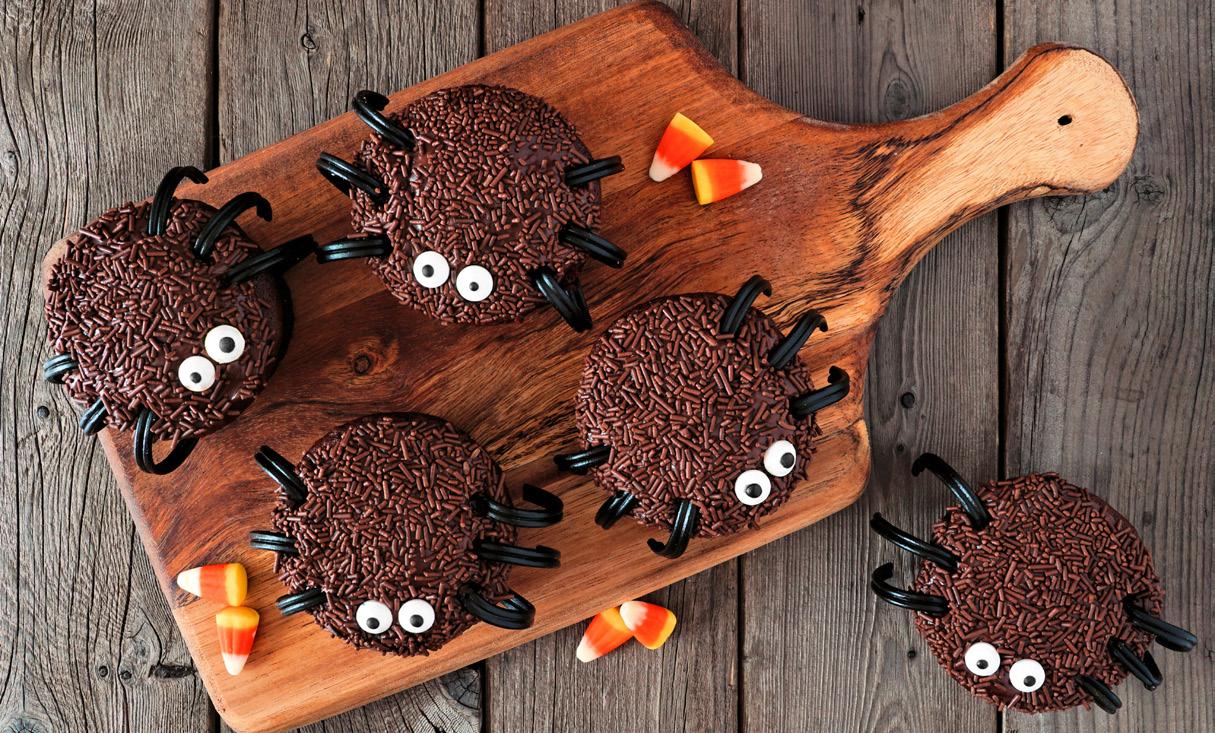
Ingredients (Makes 10 - 12)
•Spider:Chocolate sprinkles
• Candy eyes
• Haribo string licorice rolls
•Frosting:
1 cup unsalted butter, at room temperature
• cup cream cheese, room temperature
• 2-3 cups icing sugar, sifted
• Pinch of salt
• 2-3 tablespoons whipping cream, if needed
•Cupcake:



1 cup all-purpose flour
• 1 cup sugar
• cup Cocoa powder
• 1 teaspoon baking soda
• ½ teaspoon baking powder
• ½ teaspoon salt
• 1 egg, at room temperature
• ½ cup buttermilk, at room temperature
• ¼ cup vegetable oil
• 1½ teaspoons vanilla extract
Method:
Preheat the oven to 180 degrees Celsius and line muffin tins with cupcake liners.
In a large bowl, sift together all dry ingredients and lightly stir until combined. In a medium bowl, combine all the wet ingredients using a whisk. Next, make a well in the center of the dry ingredients and add the wet ingredients. Mix for 2 minutes on medium speed, scraping the sides and bottom of bowl. Mix for an additional minute on medium speed; don’t worry if the batter looks thin. Divide the batter evenly between the liners and bake cupcakes for 12-15 minutes or until a toothpick inserted comes out almost clean. Cool cupcakes on wire racks completely. Meanwhile, start with the frosting.
Frosting Directions: Whip butter and cream cheese on medium speed for about 2-3 minutes until light and creamy. Then add the powdered sugar, vanilla extract, salt, and cream and mix on low speed for 1 minute until combined. Increase speed to medium-high and whip for 2-3 minutes. Frost the cooled-down cupcakes.
To make Spiders: To make the spiders, top frosted cupcakes with chocolate sprinkles. Unroll licorice rolls and cut them into 2” sections. Lay 6 licorice legs onto each spider, slightly pushing the inner end into the frosting. Top with additional sprinkles and add two candy eyes. To make the eyes stick better, add a small amount of frosting underneath.
26 October 2022 | www.pakmag.com.au
Mini Mag
Frightfully Delightful Finger Food
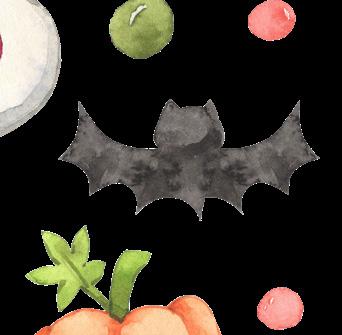
Jack O’Lantern Cheeseburgers

Ingredients (Makes 6)
• 6 slices of sandwich cheese
• 500g Mince beef
• ½ cup breadcrumbs
• 1 egg

• 1 tbsp Ranch salad dressing
• ½ tbsp Tomato sauce
• Black pepper to taste
• 6 Hamburger buns
Method:
Heat the grill section in your oven to medium-high heat, 180 to 200 degrees Celsius. Spray the grill rack with nonstick cooking spray or place baking paper onto the rack. Next, combine ground beef with ranch seasoning mix, ketchup, and pepper. Use your hands to mix well. Once mixed, shape the beef into 6 patties. Place the patties on the grill rack to cook. Check intermittently and flip the patties over when brown on top. Cook for approximately 20 minutes until through.
Next, cut the cheese faces. Start by cutting eyes, nose, and mouth shapes out of each cheese slice to create a Jack-o’-lantern effect.

Once the patties are cooked, place the cheese slices on the burgers and grill until the cheese is slightly melted. Serve on lightly toasted hamburger buns with your favorite toppings.
Grilled Mini Mummy Pizzas
Ingredients (Makes 4)
• 4 pita breads
• 4 teaspoons pizza sauce
• Cheddar or sandwich cheese slices
• 8 black olive slices

Method:
Heat the oven to 220 degrees Celsius. Place the pita bread on a baking sheet and spread each bread with a teaspoon of pizza sauce or more sauce if desired. Cut the cheese slices into thin strips. Place the strips onto each pita bread at angles so they look like a mummy. Next, place two sliced black olives on each bread. These will create the eyes. Bake each Mini Mummy Pizza for 10 minutes or until the cheese melts and begins to turn golden.
www.pakmag.com.au | October 2022 27
Mini Mag
For your chance to WIN a family pass to Mia and Me: The Hero of Centopia enter at www.pakmag.com.au/win. Competition closes 31/10/2022.


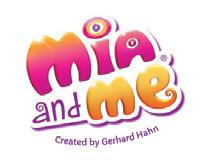


IN CINEMA S OCT OBER 27


Water Safety and How to Manage an Emergency
STORY Loretta Woodford - Parentmedic North Queensland Owner

Did you know that drowning is the top cause of death in children under the age of five, with ten casualties annually in Queensland alone?
Children have a natural fascination with water, and as babies and toddlers are top heavy, they are at a higher risk of drowning and being unable to lift themselves out. Drowning can be quick, silent and deadly - it only takes 20 seconds and a few centimetres of water.
The rules to live by are constant supervision, keeping your child in arm’s reach and avoiding distractions. Not to mention swimming lessons are invaluable and highly recommended for everyone.
Attending a first aid course and learning cardiopulmonary resuscitation (CPR) is the only way to know what to do when managing an emergency around water. CPR helps keep the blood circulating and delivers oxygen to the body until help arrives. It’s a good idea to update first aid skills every three years and also update your CPR each year.
The acronym D.R.S.A.B.C.D. outlines the essential action plan.
D is for Danger - Do not put yourself in danger when trying to rescue a child. If more victims are added, first aid becomes unmanageable.
R is for Response - Look for a response in the child. Call the child’s name, rub their hand or give their shoulder a squeeze.
S is for Send for help - Call 000, stay with the child and shout to alert anyone nearby. Put your smartphone on speaker and listen to instructions given by the
communications centre. They will stay with you until help arrives.
A is for Airway - Check the airway by opening their mouth and clearing any debris using your fingers.
B is for Breathing - Look for the rise and fall of the chest, listen at the mouth for normal signs of breathing and feel for air against your cheek. Do this for 10 seconds and if the child is breathing, place them in the recovery position.
C is for Compressions - Start chest compressions if the child is still not breathing. Place the child on their back and kneel beside them. 30 compressions followed by 2 breaths at the rate of 100 - 120 compressions per minute. Breaths are optional. Press down firmly to about a third the depth of the chest - 4cms for infants. Continue until help arrives.
D is for Defibrillation - A defibrillator or AED (automated external defibrillator) is the next step if the child is still unconscious and not breathing. Normally not available in the home, these devices are available in many public areas and are easy enough for a child to use. When the ambulance arrives, a Paramedic will attach pads to the child immediately.
Please be mindful that these instructions are no substitute for an accredited CPR course.
If you’d like to know more, an excellent resource for water safety in Queensland is the Laurie Lawrence campaign Kids Alive. This website provides a Kids Channel, Parents Library and Teacher Hub. www.kidsalive.com.au

Loretta Woodford is passionate about educating parents and carers to be confident in an emergency situation through her Baby / Child First Aid sessions. She is a Registered Nurse with a Master in Nursing (Education) and the Owner of Parentmedic North Qld. She is dedicated to ensuring every parent in north Queensland can be their child’s lifesaver. To book a private or public session, contact Loretta at hello@parentmedicnorthqld.co
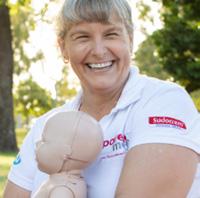
www.pakmag.com.au | October 2022 31
Bump, Bub and Beyond
All Things Health
Speech Pathology for Kids
While talking comes naturally for some children, it’s more difficult for others, and that’s where a Speech Pathologist can help. Speech Pathologists work with people who have difficulties communicating due to various reasons such as developmental delays, hearing impairments or learning disabilities. They can also help people who have difficulty swallowing food and drink.
Speech pathologists will usually work with a child oneon-one and use various strategies. Language intervention activities can involve playing and talking with the help of visual aids such as pictures, reading and deciphering books. Articulation therapy involves having the therapist model correct sounds and syllables in words and sentences for the child, often during play activities. The Speech Pathologist may also demonstrate how to move the tongue and mouth in order to produce the correct sign, and give the child exercises to practise at home between sessions.
Because younger children tend to have better outcomes than those who begin therapy later, it is a good idea to detect and resolve speech and language problems early. As with any other health and wellbeing concerns, be sure to see your doctor to discuss your child’s development and implement a plan that supports their growth.

Gut Health+ 3-In-1 Fibre
Jana Gorski NaturopathCalanna


calmherhormones,swings.experiencesMyDearChemmartTerryWhiteJana,teenagedaughtermoodI’mthinkingit’scanIgiveanythingtohelpherdown?


Commonly, hormones are blamed for the mood swings and challenging behaviours, however, research shows that a reconstruction of synaptic pathways in the growing brain causes elevated levels of stress. While hormones can play a part in mood swings, your teen would also have other symptoms indicating that. You can consult with a Naturopath who can help to determine if hormones are a factor. If this is the case, they can prescribe diet, lifestyle and supplement advice to correct any imbalances.CalannaWholeHealth Pharmacy www.calannapharmacy.com.au
GutHealth+ 3-In-1 MultiFibre offers a symbiotic blend of prebiotics and probiotics to aid optimum gut health.

The formula consists of all three fibre groups including soluble, insoluble, and fermentable fibre, as well as the probiotic, bacillus coagulans. All working synergistically to promote healthy gut flora and digestion, and bowel movement.
A healthy gut is critical to your wellbeing, so don’t forget to grab your Gut Health+ from your local Calanna TerryWhite Chemmart.
Consult your local health practitioner, doctor or pharmacist for advice on these topics first to ensure the best health outcomes.
32 October 2022 | www.pakmag.com.au Health




4 Things to Plan Now for Your Ageing Parents
STORY Coral Wilkinson
Our parents come from a generation that didn’t make a fuss and ‘just got on with it’, highly valuing independence. As our parents age, they grapple with the increased frailty that is associated with the ageing processes. Their physical strength declines, mobility becomes impaired, and some may develop cognitive impairment. There are many reasons our ageing parents will need support as they age.

As adult “children” who want to support our parents, we face many challenges. Ageing parents want to continue living in their own homes, often unwilling to acknowledge they are needing more support.
They are so independent and stoic that they won’t accept support and family members often cannot agree on a united plan with their siblings about the best way forward for mum and dad.
The key to supporting ageing parents in this situation is to initiate conversations about future planning before a crisis happens, as support and service assessments take time.
If you’re thinking your ageing mum or dad might be needing some support, or more importantly, if you as a family are already providing support, then the time to act and progress both conversations and referrals to aged care support is now.
1. Start Thinking About What Support is Needed
Informal support provided by family members or neighbours is generally initiated as our parents age. This support might include chores such as mowing the yard, cooking meals, arranging tradespeople on their behalf, coordinating appointments and taking them to those appointments, organising groceries, and more. This kind of support is accepted by our ageing parents as most families acknowledge that our parents took care of us, so we do the same as they age. But what many adult “children” don’t realise is that over time,
the level of support the family is providing increases and once the level of support is no longer sustainable, urgent outside support can be very difficult to arrange.
The good news is, there are many government subsidised programs for in-home care. These programs have different eligibility criteria and different levels of support, and by understanding what all these programs are and how they can be used according to the person’s circumstances, it is possible to access the most appropriate support.
All programs are accessible via My Aged Care, the gateway to all services and supports that are subsidised by the Commonwealth Government. Registering with My Aged Care is the first step to progressing through screenings and assessments and gaining access approval for the government programs offered to ageing people.
2. Reflect on Your Individual Situation and Needs
You should only contact My Aged Care when you’ve taken the time to reflect on your loved one’s situation, thought about all the support that is being provided and written down what this support is and how many hours each week it adds up to. You also need to reflect on the toll ongoing support is taking on you and other family members. This point is very important, so be honest with yourself.
As mentioned previously, receiving support under the aged care program takes time, sometimes many months, so how you are feeling now needs to be borne in mind as the months progress while waiting for government support to start. Contact with My Aged Care is something to be considered carefully. Preparation before contacting My Aged Care is key to ensuring the initial screening process accurately reflects your older loved one’s needs and considers the sustainability of your role as a carer.
www.pakmag.com.au | October 2022 35
Education
3. Contact My Aged Care
My Aged Care is a call centre, just like a Telstra call centre or an airline call centre. The staff at My Aged Care are not clinicians and they don’t have a background in aged care. They receive limited training in the government’s aged care program and cannot answer your questions personally; their answers are scripted and Duringgeneric.theinitial
contact with My Aged Care, the call centre staff will begin the screening process for your loved one. If you aren’t prepared and haven’t given thought to the amount of support the family or neighbours are providing and don’t have a list in front of you, then it is likely your loved one will be referred to the wrong assessment team and miss out on the full range of services. You need to drive the conversation with My Aged Care!
The call centre staff at My Aged Care have a questionnaire they complete with everyone who contacts them. This questionnaire doesn’t cover all the things we, as aged care specialists, take into consideration when assessing people comprehensively. And the answers you’re able to give don’t allow for a detailed conversation about your older loved one’s needs. Driving the conversation by articulating your loved one’s needs will place them in a stronger position to get better outcomes.
4. Wait for Approval or Request a Support Plan Review if Urgent Needs Arise
After a referral has been triggered within My Aged Care and an assessment has been completed, people will be approved for in-home support. The support approved will depend on which assessment team has completed the assessment. There are waiting lists for all services and supports and these waiting lists can vary from weeks to months before support can be provided.
You can, however, request a Support Plan Review if your loved one’s needs are increasing but services haven’t yet commenced. Asking for a Support Plan Review or a priority review as it is also known, alerts the assessment team that a situation of urgency exists.
If you’re waiting for services to start and struggle to keep supporting your ageing parents, you should contact My Aged Care again and be very assertive, stating your case relating to risk. The risk of your older loved one prematurely entering an aged care facility because you cannot keep going without formal support is a big red flag to assessors and will trigger a review for a higher priority to receive services, thereby decreasing the wait time significantly. Essentially, it will push your older loved one forward in the national queue and they’ll be assigned services and support sooner.
Allocation of funding is not defined by particular services required. Instead, the funding is allocated as a monthly subsidy that the recipient can use for whatever they want. Some may want cleaning, others may not, it’s entirely the recipients choice as to how they want to spend their funding.
There are four levels of Home Care Packages, from level 1 for basic care needs to level 4 for high care needs.
Each different level attracts a different amount of subsidy. Many people refer to this as the value of the package.
Coral Wilkinson is a Registered Nurse, aged care navigator and author of See Me Aged Care Navigators is regarded as the ‘go to’ person in her industry for people seeking to support older loved ones at home. Coral appeared as a subject matter expert on SBS Insight program, Caring for Ageing Parents and has just published her book My Parents Are Ageing, What The Heck Do I Do? Understanding Australia’s aged care system to support older loved ones at home. www.seemeacn.com.au
WIN a Copy of My Parents Are Ageing, What The Heck Do I Do? $44.25 - www.seemeacn.com.au



This essential guide to understanding Australia’s aged care system to support older loved ones at home will show you how to have a compassionate discussion with your loved one about accepting support. It will also prepare you for that important first contact with My Aged Care, explain the different assessment teams, show how to prepare for an assessment, show how to choose a Home Care Package provider and teach you how to access increased support as your loved one’s health declines and prepare you for the coming aged care reforms regarding in-home care.
Visit www.pakmag.com.au/win for your chance to win! Competition closes 31/10/2022.
For more on this topic with Coral, tune into Episode 130 of the PakMag Parents Podcast at www.pakmag.com.au/podcast
36 October 2022 | www.pakmag.com.au
Education


What is Sleep Phase Delay?
STORY Erica Komisar, Psychoanalyst, Parent Guidance Expert and Author


If your teenager often goes to sleep late and seems tired during the day, it’s likely not their fault. Anxiety about school, friends, family and the state of the world can make it difficult for teens to fall asleep at night. The temptation of being on the internet and looking at social media can also make it difficult to prioritise sleep. What many parents do not know is that hormones play a major role in a teen’s sleep.
During puberty, there is a shift in timing in the body’s circadian rhythm. This natural shift results in teens having a condition called “sleep wake phase delay,” meaning that their melatonin (the hormone that tells us when it’s time to go to sleep) is released a couple of hours later in the night than in younger children and adults. Therefore, falling asleep at earlier times can be difficult for teens, given that they have less pressure from their bodies to fall asleep.
While adults need 7 - 9 hours of sleep each night for optimal functioning, teenagers need 8 - 10 hours of sleep. It is not surprising then that most teens are not getting enough sleep. The 8 - 10 hours of sleep needed along with the body becoming tired later in the evening and early school start times can greatly impact a teen’s everyday life. They may feel lethargic and grouchy during the day, have trouble getting out of bed in the morning and take frequent naps.
Sleep is imperative to teens because they are in a critical period of their development where they are not
just growing physically, but also intellectually and emotionally. Chronic sleep deprivation at this age may lead to a myriad of problems, such as poor school performance, car accidents and depression. Teenagers today have busy lives, but sleep still needs to be a priority. They must learn now to prioritise getting an adequate amount of sleep as a form of self-care, or else they are setting themselves up for burn out and problems with mental health as they grow Thougholder.itcan
be frustrating to get your teen out the door in the morning to make it on time to school, it is important to try to offer empathy and understanding toward the struggle to reconcile their biology with the outside demands of time. Instead of adding to your teen’s anxiety about getting an adequate amount of sleep, parents can help them to make adjustments to their sleep habits, such as encouraging them to lessen use of cellphones and other technological devices around bedtime.
You can encourage them to listen to the sleep pressure when they feel it at 12 or 1 in the morning. You can also discourage napping so that your teen has an easier time falling asleep at night and does not disrupt their sleep schedule. Finally, you can work with your teen to practise mindfulness meditation, which can help them relax and clear their minds, alleviating the anxiety that may keep them up late at night.
Erica Komisar, LCSW is a psychoanalyst, parent guidance expert and author of Being There: Why Prioritising Motherhood in the First Three Years Matters as well as Chicken Little The Sky Isn’t Falling: Raising Resilient Adolescents in the New Age of Anxiety.

www.pakmag.com.au | October 2022 39
All Things Tweens and Teens
All Things Tweens & Teens
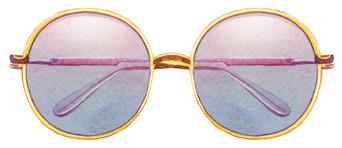
Tips on Teaching Your Teen How to Drive
While the thought of your teen driving solo might be worrying, it’s a key milestone for many young people. A shiny new P-plate gives them freedom and independence, but it also puts them at risk. Here are some tips to help you and your teen feel more confident.

Training is key to safe driving. Start by finding a good supervisor and ensure you help your child gain plenty of practice in all conditions. Additionally, you can also book a free one-hour Keys2Drive lesson. These government-funded lessons, which include 30 minutes of theory and 30 minutes behind the wheel, train both the parent-instructor and the learner on developing safe and confident young drivers.
Is Your Teen Ready to Leave Home?
Teens love their independence, but how well can they manage daily tasks, soft skills and emergencies?

If you do not have access to a car or do not drive yourself, enquire with your local PCYC about their “Braking the Cycle (BTC)” program. This driver mentor program supports learner drivers without access to a supervisor or registered vehicle to complete their logbook hours.
While life skills such as work, transportation, finances and basic household management are no-brainers, softer skills like goal setting, emotional regulation, safe decision making and looking after one’s health are equally important. Practising what to do in an emergency situation is also crucial. Consider enrolling your teen into a first aid course, and teach them how to manage power outages and what to do without a phone or wifi. Life is full of unexpected challenges, so being able to stay calm, creatively solve problems, and understand where and when to ask for help can be a life saver!
WIN a Hormones and Mood Bundle from Ora

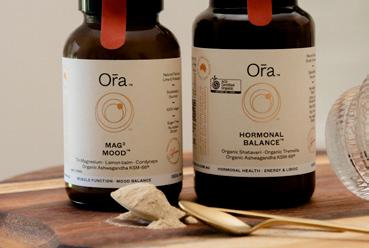
$98.90Hormonalwww.orahealth.com.auBalance - a radically delicious hormone-supporting powder for the ladies. Formulated with a synergistic blend of adaptogens, tonic herbs, Tremella and Vitamin B6 to help with the regulation of hormonal activity, stress and energy.
Mag³ Mood - Your everyday, triple-magnesium powder for neuromuscular relaxation and function, with mood and stress supporting herbs and sustainably-sourced vegan Cordyceps. Mag³ Mood supports muscle tension and cramps, low energy and stress relief.
Head to www.pakmag.com.au/win for your chance to WIN!
40 October 2022 | www.pakmag.com.au
All Things Tweens and Teens


Daddy Diary
Back in the 90’s my mother’s favourite film was Father of the Bride. The 1991 classic see’s Steve Martin play a bloke named George Banks. A clumsy, foot-in-themouth prone father who’s young daughter suddenly grows up (way too quickly for George’s liking). Back in those days, Steve’s character was nothing but a silly old man to me. How did I all of a sudden become that man myself?
Let’s be clear about one thing - my daughter is not (I repeat IS NOT) running off to tie the knot. But at the rate she’s growing up, I sometimes feel like that is just around the corner. The thought makes me shudder. Turns out my Dad and all those other “old” people were right. Kids really do grow up way too fast!

Let’s start with my daughter, Matilda. Little Miss Eight (going on 18). The other day she came home demanding her mother and I buy her a crop top. I have to be honest and admit I didn’t actually know what a crop top was.


But after googling it I can assure you she’s definitely not getting a crop top. Her argument was that her little friend (let’s call her Caitlin) has one. I pulled out the classic line “Well if Caitlin jumped off a bridge, would you?”. I know, what a horrendous thing to say. That line was so George Banks. It wasn’t that long ago my little girl’s hero was Emma Wiggle and the only thing she wanted from me was the latest Barbie doll. How has all that innocent kid stuff been replaced by a crop top?
It has to be said my son ain’t doing much to help the problem either. He’s only three, so still very young. But what happened to my little baby boy? The bottles and the cuteness and even the nappies. The fact he can now walk up to his mother and I and ask to go to the toilet proves that his baby days are behind him. You know you’re getting clucky when you complain about not having to change nappies any more.
In short. Our parents were correct. The time does pass way too quickly. And maybe all those wise people are even right about the whole “make the most out of everyday” thing after all.
Cliffo Hit 103.1

www.pakmag.com.au | October 2022 43
Daddy Diary
Community Noticeboard

CQU TAFE 2023 Course Enrolments Are Now Open


CQU TAFE 2023 course enrolments are now open, including the school program Start TAFE Now (STN). The courses range from HLT23215 - Certificate II in Health Support Services to HLT54121 - Diploma of Nursing. Free and low-fee courses are available now thanks to government subsidies. Eligibility criteria applies. To find out more please call 13 27 86 or visit www.cqu.edu.au/tafe

Moulin Rouge
More info: www.stagedoortheatre.com.au


Pack your bags for a trip to Paris with Stage Door’s hilarious show Moulin Rouge!



The stage is set for an unforgettable night of comedy and cabaret, featuring all your favourite hits from Moulin Rouge such as Lady Marmalade, Sparkling Diamonds and many more. Book your tickets on Stagedoor’s website and the Ferry tickets via Sealink.
Education Employment Expo
When: 6 October, 5.00pm - 7.00pm





Where: Pavillion, The Ville Resort Casino











More info: www.tsv.catholic.edu.au
Discover opportunities and benefits that are available within the Catholic Education system.

Mardi-Paws Cocktail Party and Auction Support Angel-Paws Inc., Townsville’s animal rescue charity, at this month’s Mardi-Paws Cocktail Party and Auction on 9 October. Tickets cost $95.00$180.00. www.angelpawsinc.com.au
Please confirm the above details are correct before visiting during these uncertain times.We have done our best to ensure all details are correct at time of print.

44 October 2022 | www.pakmag.com.au
World Smile DayMake the world a happier placeon 7 October by taking makeandit#worldsmiledaychallenge.theShareonyoursocialmediaplatformschallengeyourfriendstosomeoneelsesmiletoo!
Townsville’s Big Blue Table Breakfast
When: 13 October / 7.00am - 9.00am
Where: The Ville Resort-Casino
























More info: www.centacarenq.org.au




Centacare are taking positive steps to supporting a mentally healthy, connected community, with Townsville’s Big Blue Table Breakfast. It’s time to take a positive, active step forward in making mental health something we discuss. Please join in, get some friends, work colleagues or acquaintances together, book your tickets, put on something blue, and come for breakfast. Tickets include The Ville buffet breakfast, guest speakers, giveaways, lucky door prizes, information about support, training and services in the local region and a take-home kit. There might even be competitions and prizes. Cost is $40.00 - $450.00.


National Water Week

When: 17 - 23 October









National Water Week inspires individuals, communities, and organisations to build awareness around the value of water. Access to clean water is hugely important to our daily lives, and it’s down to all of us to protect our water environments and resources and use water wisely.


Water covers three-quarters of our planet and makes up two-thirds of our bodies. We thirst for it and bathe in it. It’s used by communities, industry and agriculture, for health and liveability, the environment, Aboriginal cultural access, food production, and more. Water is an essential resource needed for economic prosperity wherever you live. This year’s theme “Our Water Stories” is an invitation to all communities to share their Water Stories.
Get Involved!
We’d love to hear from you! Head to www.paktownsville.com.au/community to submit community news or a notice, and also view the full community noticeboard online.
 *See
*See
www.pakmag.com.au | October 2022 45
P.16 for more details
What’s On
SATURDAY 1 OCTOBER
Moulin Rogue Stage Door Theatre Restaurant 5.00pm - 9.15pm / $85.00 / www.stagedoortheatre.com.au15+
Fantasy Fairy GardensTwo Part Workshop with Linda Bates
The Drill Hall Studio 1.30pm - 4.00pm / $90.00 / www.thedrillhallstudio.as.mePG
Mundy Creek Landcare Day
Mundy Creek Landcare SiteThe end of Lockheed Street 4.00pm - 6.00pm / FREE / PG
Coastal Dry Tropics Landcare Inc
BYO Baby Short Course Dancenorth Australia 10.30am - 11.30am / $16.00$45.00 / FlashbackPG Dance
School Holiday Workshop: Electronics Experiments! Jaycar 11.00amTownsville-12.30pm / $30.00 / PG www.jaycar.com.au
3D Pen Workshop Umbrella 10.00amContemporaryStudioArts-12.00pm/ $120.00$140.00 / www.umbrella.org.auPG
Funky Fish’ Paint & Sip Tipsy Doodle at Fur-Mum’s
1.30pm - 4.30pm / $49.00 / PG www.tipsydoodle.com.au

SUNDAY 2 OCTOBER
Oktoberfest 252-270 Flinders Mall 12.00pm - 10.00pm / $27.00$183.00 / 18+
The Brewery Townsville
Castle Hill Site Day - Sunday Hillside Crescent 3.30pm - 5.30pm / FREE / PG
Coastal Dry Tropics Landcare Inc
Women Circle
Anzac Memorial Park
3.00pm - 5.00pm / FREE / PG
Women Circle in Townsville
Minions’ Create & Paint Tipsy Doodle at Fur-Mum’s 1.30pm - 4.30pm / $49.00 / PG www.tipsydoodle.com.au
TUESDAY 4 OCTOBER
North CameraQueenslandGroup
City Libraries Aitkenvale 7.00pm - 9.00pm / FREE$5.00 / www.nqcg.org.auPG
Adult Beginner Ballroom & Latin American Dance Course Runs until 19 November
Experience Dance 6.00pm - 7.00pm / $15.00 / www.experiencedance.com.au18+
Breathwork, Original Breathwork Sessions
31 Gilbert Crescent 5.50pm - 7.00pm / FREE / M www.eventbrite.com.au
WEDNESDAY 5 OCTOBER
Kinky Boots Townsville Civic Theatre 8.00pm - 11.00pm / $45.00 / PG www.nqomt.com.au
Tough Guy Book Club The TapHouse Townsville 7.00pm - 10.00pm / FREE / 18+ Tough Guy Book Club
THURSDAY 6 OCTOBER
Art-box
Perc Tucker Regional Gallery 10.30am - 11.30am / FREE / G www.townsville.qld.gov.au
Townsville Influencers Workshop (Women in Building) Master Builders Queensland, 9.30amAitkenvale-11.00am / $22.00 / 18+ www.mbqld.com.au
Art-box
Perc Tucker Regional Gallery 10.30am - 11.30am / FREE / G Perc Tucker Regional Gallery
Education Employment Expo
The Ville Resort-Casino 5.00pm - 7.00pm / FREE / PG www.tsv.catholic.edu.au
FRIDAY 7 OCTOBER
October Exhibitions
Launch Umbrella www.umbrella.org.au6.00pmContemporaryStudioArts/FREE/PG
Sacred Cacao Ceremony
Inner Light Meditation Centre 7.00pm -11.00pm / $25.00 / M Inner Light Meditation Centre
Skullduggery Official Opening
Murky Waters Studio 6.00pm - 8.00pm / FREE / PG Murky Waters Studio
WSCC Master Blasters Cricket Term 4 Runs weekly until 2 December
Townsville Western Suburbs Cricket 6.00pmClub-7.30pm / $90.00 / G Townsville Western Suburbs Cricket Club
NQ Media BallBack In Black 2022 Queensland Country Bank 6.00pmStadium-11.30pm / $90.00 / 18+ North Queensland Media Ball
Project Speak Up Presents... Lunch with Grace Tame
The Ville Resort-Casino 11.30am - 2.00pm / $150.00 / www.projectspeakup.com.au16+
46 October 2022 | www.pakmag.com.au
With HIT 103.1’s Cliffo & Gabi
Summer Football Six-a-side Victoria Park
6.00pm - 9.00pm / $60.00$480.00 / www.estatesfc.com.au15+
SATURDAY 8 OCTOBER
Moulin Rogue Stage Door Theatre Restaurant 5.00pm - 9.15pm / $85.00 / www.stagedoortheatre.com.au15+
Race around Anderson Park Anderson Gardens
6.30am - 8.30am / FREE$6.00 / com.auwww.townsvilleroadrunners.PG
An ADF Families Event: Defence Family Fun Day - Townsville Melvilles Entertainment, 45 Alligator Creek Road 3.30pm - 7.00pm / FREE / familieswww.defence.gov.au/members-18+
Neck Of The Woods Music Festival 2022 Cluden Park, Racecourse Road 12.00pm - 10.00pm / $64.00$90.00 / www.neighbourhoodsessions.com18+
Street Photography Meetup Cotters Market Townsville 8.00am - 10.00am / $39.00 / PG group.com.auwww.townsvillephotography
Mardi-Paws Cocktail Party and Auction
Sovereign House Townsville 6.00pm - 10.00pm / $95.00$180.00 / www.angelpawsinc.com.auM
Artistic Tattoo Workshops Museum of Tropical Queensland 10.00am - 12.00pm / $25.00 / 18+ www.mtq.qm.qld.gov.au
SUNDAY 9 OCTOBER
Lift The Lid Walk for Mental Health - Townsville 2022 Strand Park, 37 - 43 The Strand North 8.00amWard-2.00pm / FREE$31.00 / org.auwww.australianrotaryhealth.15+

Alabanza Jamboree Pallarenda Beach 9.30am - 2.00pm / FREE / PG Circus Alabanza
Lift The Lid Walk for Mental Health Strand Park Beach 8.00am - 12.00pm / FREE$32.00 / PG Lift the Lid on Mental Illness
Reef Magic’ Paint & Sip Tipsy Doodle at Fur-Mum’s 1.30pm - 4.30pm / $49.00 / PG www.tipsydoodle.com.au
MONDAY 10 OCTOBER
An ADF families Event: Wellbeing Day - Townsville Lavarack Barracks, 50 - 354 University Road, 9.30amMurray - 2.00pm / FREE / familieswww.defence.gov.au/members-18+
WEDNESDAY 12 OCTOBER
Jacobs Ladder and Castle Hill - Afternoon Walk Soroptimist Park 5.30pm - 6.30pm / FREE / PG Michael Pugh
THURSDAY 13 OCTOBER
Jazz Jams Heritage Exchange 7.30pm - 10.30pm / FREE / PGHeritage Exchange
Townsville’s Big Blue Table Breakfast The Ville Resort-Casino 7.00am - 9.00am / $40.00$450.00 / www.centacarenq.org.auPG

FRIDAY 14 OCTOBER
Creative PhotographyIndustriesForArtists Umbrella 5.30pmContemporaryStudioArts/$30.00-$40.00 / M www.umbrella.org.au
2022 NQ Tourism and Events Awards

The Ville Resort-Casino 6.30pm / $175.00 - $225.00 / M Townsville Enterprise
Adventure SessionsHiking Nutrition with Tayla Castle Hill Look Out 5.30pm - 7.30pm / FREE / M Michael Pugh
SATURDAY 15 OCTOBER
Moulin Rogue Stage Door Theatre 5.00pmRestaurant-9.15pm / $85.00 / www.stagedoortheatre.com.au15+
Artistic Tattoo Workshops Museum of 10.00amQueenslandTropical-12.00pm/ $25.00 / 18+ www.mtq.qm.qld.gov.au
2022 Townsville Greyhound Adoption Program Great Global Greyhound Walk The 8.00amStrand-9.00pm / FREE / PG www.gapqld.com.au
SUNDAY 16 OCTOBER
Free Junior Aquathon and Prize Giving Rock Pool The Strand 7.00am / FREE / www.nqtriathlonacademy.comG
Please check with individual businesses before visiting.
www.pakmag.com.au | October 2022 47

What’s On
SUNDAY 16 OCTOBER
Picnic and Play at Prep Open Day
Townsville Central State School 3.00pm - 5.00pm / FREE / G Townsville Central State School
Run4reef Townsville Strand 12.00pmPark/$29.00 - $87.00 / www.run4reef.orgPG

WEDNESDAY 19 OCTOBER
Girls Can, Trade Up! Aurora Training Institute, 290 - 292 Ross River Road, 6.00pmAitkenvale–8.00pm / FREE / www.masnational.com.au18+
THURSDAY 20 OCTOBER
Art-box
Perc Tucker Regional Gallery 10.30am - 11.30am / FREE / G www.townsville.qld.gov.au

FRIDAY 21 OCTOBER
Moulin Rogue Stage Door Theatre 5.00pmRestaurant-9.15pm / $85.00 / www.stagedoortheatre.com.au15+
Riverway MoviesClifford the Big Red Dog Riverway Oval 6.30pm - 8.00pm / FREE / gov.auwww.whatson.townsville.qld.PG
SATURDAY 22 OCTOBER
Moulin Rogue Stage Door Theatre Restaurant 5.00pm - 9.15pm / $85.00 / www.stagedoortheatre.com.au15+
SUNDAY 23 OCTOBER
Townsville Wedding Expo Townsville Entertainment & Convention Centre 10.00am - 2.00pm / $10.00 / PG www.idealbride.com.au
Great Aussie Pooch Party The Park at the Strand 7.00am / $10.00 / PG Ray White Townsville
Walk For Epilepsy Jezzine Barracks 8.00am - 12.00pm / Donation / www.epilepsyqueensland.com.auPG
TUESDAY 25 OCTOBER
Napoleon Perdis Tour “Teach Me How to Makeup” Rydges Southbank 6.30pm / $135.00 / www.blushous.com.auM
FRIDAY 28 OCTOBER
Portrait Oil MasterclassPainting Runs until 30 October Umbrella 9.00pmContemporaryStudioArts-4.00pm/ $610.00 / 18+ www.umbrella.org.au
NAIDOC Art Expo Runs until 30 October Dancenorth Australia 6.00pm - 1.00pm / PG Big Eye Theatre
Kith and Kin All Abilities Disco 123 - 127 Ingham Rd 6.00pm - 10.00pm / $15.00 / 16+ Kith and Kin Nonprofit


SATURDAY 29 OCTOBER
Moulin Rogue Stage Door Theatre Restaurant 5.00pm - 9.15pm / $85.00 / www.stagedoortheatre.com.au15+
Sign Time Townsville: The Strand Water Park
The Strand Water Park 2.00pm - 4.00pm / FREE / PG Deaf Connect
Townsville Eats Halloween Edition Flinders Street East 4.00pm / FREE / gov.auwww.whatson.townsville.qld.PG
Townsville Saints Derby Day Luncheon
The Ville Resort-Casino 11.30am - 3.00pm / $110.00 - $1200.00 / M Rotary Club of Townsville Saints

www.pakmag.com.au
 With Triple M’s Pricey
With Triple M’s Pricey
| October 2022 49
Please check with individual businesses before visiting.
Regular Events
MONDAYS
Qi Gong Runs sporadically until 19 InnerDecemberLight Meditation Centre 5.30pm - 6.30pm / $15.00 / G centre.comwww.innerlightmeditation
TUESDAYS
Toddler Time
During school term.
Townsville Stadium 9.00am / FREE (bookings required) / for carers and toddlers aged 24 + www.townsville.qld.gov.aumonths
Baby Rhyme Time
During school term. Townsville Stadium 10.30am / FREE (bookings required) / for parents and babies 0 to 24 www.townsville.qld.gov.aumonths
North CameraQueenslandGroup
First Tuesday of each month QCWA – Magnetic Garbutt First meet FREE / G www.nqcg.org.au
WEDNESDAYS
Baby Rhyme Time
During school term. CityLibraries Thuringowa Central 9.30am / FREE (bookings required) / for parents and babies 0 to 24 www.townsville.qld.gov.aumonths
Toddler Time
During school term. CityLibraries Thuringowa Central 10.30am / FREE (bookings required) / for carers and toddlers aged 24 + www.townsville.qld.gov.aumonths
Flashback Dance BYO Baby Class Runs RailwayweeklyEstate Community 12.30pmCentre / $12.00 / G E outlook.comflashbackdancetownsville@
THURSDAYS
Yoga for Happiness 5 week programs, run weekly until 15 December
Regular Markets
Townsville South State School 6.30pm - 8.00pm / $100.00 / www.yogaaspirations.com.auM
Playtime at the Library with First 5 Forever Runs Hinchinbrookweekly Shire Library 10.30am / FREE / Ages 0gov.auwww.library.hinchinbrook.qld.5
Baby Rhyme Time
During school term. CityLibraries Thuringowa Central 10.30am / FREE (bookings required) / for parents and babies 0 to 24 www.townsville.qld.gov.aumonths
Storytime
During school term. CityLibraries Thuringowa 9.30amCentral / FREE (bookings required) / for carers and children aged 3 years www.townsville.qld.gov.au+
FRIDAYS
Moulin Rogue Runs until 17 December
Stage Door Theatre Restaurant, Magnetic Island 5.00pm - 9.00pm / $95.00 / www.stagedoortheatre.com.auPG
Little Learners
Runs weekly during school MuseumtermsofTropical Queensland 10.00am - 10.45am / FREE / children aged www.athome.qm.qld.gov.au3-6
Breathwork Sessions
Runs weekly Inner Light Meditation Centre 7.00pm - 8.00pm / FREE / G centre.comwww.innerlightmeditation
SATURDAYS
Establishing the Basics - Yoga 5 week yoga programs, Runs until 17 TownsvilleDecemberSouthState School
8.00am - 9.15am / $100 per course / www.yogaaspirations.com.au/M
Many markets are subject to weather conditions and community guidelines, so please check with market organisers and relevant communities before visiting.
Bluewater Twilight Markets
February - December
Second Saturday of the month
4.00pmBluewater8.00pmCommunity Centre
Bushland Beach Markets
March - December
First and third Sunday of the EndOn8.00ammonth–12.00pmtheforeshore,ofMountLow Parkway
Renegade Handmade Markets
Second Sunday of the month
8.00am – 12.00pm
Marian School Hall
Balgal Beach Markets
First Saturday of the month 8.00am - 1.00pm
The Esplanade, Balgal Beach
Strand Night Markets
March - December
First Friday of the month 5.00pm - 9.30pm
Strand Park, North Ward
Mundingburra Markets
Third Sunday of the month
7.30amMundingburra12.00pmState School
Willows Rotary Markets
Every Willows7.30amSunday-11.30amShopping Centre Car Park
Cotters Markets Every Flinders8.30amSunday-1.00pmSt
Magnetic Island Markets
April - January Every Foreshore9.00amSunday–2.00pminHorseshoe Bay
Mercer Lane Markets
April - December
First Saturday of the month
From 8.30am – 12.00pm Lannercost St, Ingham
New Look Conroy Markets
March - December Second Saturday of the month
8.00am – 12.00pm
Conroy Hall, Ingham
Wulguru Markets Every Ingham14Wulguru7.00amSunday–12.00pmSoccerGroundsEdisonStreet,Wulguru,

Raintree Community Markets
First and Third Sunday of the frommonth7.00am - 12.00pm Rotary Park, Ingham
Forrest Beach Markets
MayFourthOctoberSunday of every month

8.00am – 12.00pm
9 - 11 Palm St, Forrest Beach
Please check with individual businesses before visiting.
50 October 2022 | www.pakmag.com.au


